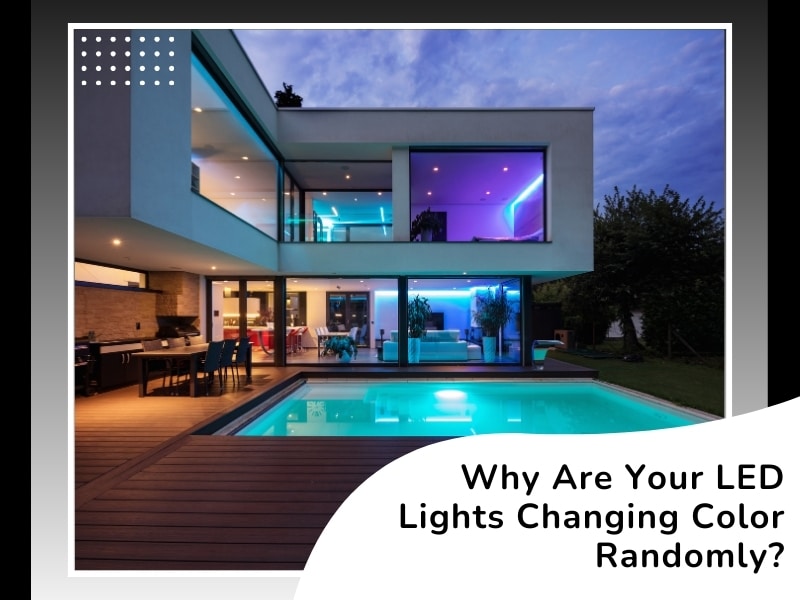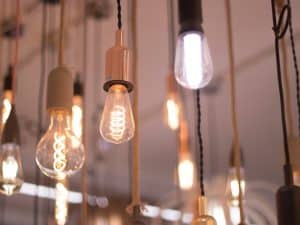LED lights are renowned for their energy efficiency and long lifespan. However, one common issue you might encounter is the unexpected changing of colors in your LED lights. If you’ve noticed your LED lights changing color randomly, you’re not alone. This blog will explore the reasons behind this phenomenon and offer solutions to help you maintain a stable lighting environment.
What causes LED lights to change color randomly?
When your LED lights change color, it can be frustrating. This phenomenon often stems from various factors. Understanding these causes can help you pinpoint the issue.
First, it’s essential to remember that LED technology is sensitive. Even minor fluctuations in power can affect its performance. This sensitivity is one reason your LED lights may change color unexpectedly.
Another significant factor is the quality of the LED bulbs you use. Not all LED lights are created equal, and cheaper options may lack the necessary components to function correctly, leading to inconsistent color output.
How do environmental factors affect your LED lights changing color?
Environmental factors can significantly impact the performance of your LED lights, which have limitations related to LED temperature sensitivity that can affect their functionality. For instance, fluctuations in temperature and high humidity levels can lead to condensation inside fixtures, impairing the operation of your LEDs. Additionally, dust accumulation can hinder heat dissipation, an essential aspect for LEDs to function properly.
To address these limitations, consider using moisture-resistant fixtures if your LED lights are installed in areas susceptible to varying temperatures or high humidity. Regular cleaning around your LED lights is crucial to prevent dust buildup, ensure proper airflow, and optimize heat management. A clean environment ensures your LED lights can function effectively without interference from external factors.
How can poor quality LED lights lead to color changes?
If you’ve opted for cheaper LED options, your LED lights could change color. Poor-quality lights often lack the necessary components for stable performance, such as these factors:
- Inadequate Drivers and Chips: Cheaper LED lights often use lower-quality drivers and chips, resulting in stable and consistent color output.
- Current Regulation Problems: Poor-quality components may struggle to regulate the electrical current properly, causing fluctuations in brightness and color.
- Thermal Management Issues: Low-quality LEDs may lack proper heat dissipation features, leading to overheating and affecting color consistency.
- Lack of Brand Reliability: Choosing well-known and reputable brands ensures higher quality, reduces the risk of frequent color changes, and extends the lifespan of your lighting.
Could overheating be the reason for your LED lights changing color?
Overheating is another factor that can cause your LED lights to change color. While LEDs generate heat, excessive heat can lead to malfunctions. If your LED lights are not adequately ventilated or covered, they may overheat, leading to color changes and shortening their lifespan.
Ensure your LED fixtures are designed for adequate heat dissipation. If your lights are enclosed in a fixture without proper ventilation, consider replacing them with fixtures that allow for better airflow. Keeping your lights cool will help maintain consistent color and performance.
Is your LED fixture compatible with the type of bulbs you’re using?
Compatibility issues can also cause your LED lights to change color unexpectedly. Not all LED bulbs fit every fixture, so if you’re using an LED bulb unsuitable for your existing fixture, it may not perform correctly, leading to flickering or color changes.
Before purchasing new LED bulbs, check their compatibility with your fixtures. Ensure the wattage and type match your existing setup. If unsure, consult an electrician or refer to the manufacturer’s guidelines to avoid potential issues.
Are your LED lights changing color due to voltage fluctuations?
One primary reason your LED lights may change color is voltage fluctuations. LEDs require a consistent power supply to function correctly, so if there are sudden changes in voltage, such as spikes or drops, your LED lights may respond by altering their color.
For instance, if your electrical system experiences an overload, it can lead to momentary voltage spikes, causing your LED lights to flicker or change color unexpectedly. To prevent this, ensure your electrical system is in good condition. Consider using a voltage stabiliser or upgrading to remote control LED lights to help maintain a steady current to your lights.
Are you using the right dimmer for your LED lights?
Using the wrong dimmer switch can also cause your LED lights to change color. Not all dimmer switches are compatible with LED technology. If you’re using an older dimmer designed for incandescent bulbs, it may not regulate the current correctly for LEDs, leading to flickering or unexpected color changes.
To avoid this, use a dimmer switch specifically designed for LED lights. These switches provide better control over the current, allowing your LEDs to perform optimally. Upgrading your dimmer can significantly reduce issues related to color changes.
What should you do if your LED lights are changing color?
If you’ve identified that your LED lights are changing color, there are several steps you can take to address the issue:
- Check the Fixtures: Ensure your fixtures are compatible with your LED bulbs. If they’re not, consider replacing them or upgrading your bulbs.
- Inspect the Quality of Your Bulbs: If you’ve been using lower-quality bulbs, consider replacing them with reputable brands. This can significantly improve performance.
- Monitor Voltage Levels: Use a multimeter to check the voltage levels in your home. Consult a qualified electrician to address any underlying issues if you notice fluctuations.
- Keep Your Fixtures Clean: Regularly clean your fixtures to prevent dust accumulation and ensure optimal performance.
- Consider Upgrading Your Dimmer: If you’re using a dimmer switch, ensure it’s compatible with LED lights. Upgrading to a suitable dimmer can resolve many color-related issues.
When should you consider replacing your LED lights?
While LED lights are designed to last, there may come a time when replacement is necessary. If you’ve tried troubleshooting and the issue persists, it may be time to consider new bulbs:
- Frequent Color Changes: If your LED lights continue to change color despite following the above steps, it may indicate a defect in the bulbs.
- Diminished Brightness: If your LED lights are not as bright as they once were, it may be a sign that they are nearing the end of their lifespan.
- Visible Damage: If you notice any physical damage to your LED bulbs, such as cracks or burn marks, replace them immediately.
- Old Technology: LED technology has advanced significantly in recent years. Newer models offer better performance and efficiency if bulbs are several years old.
Take action to stabilize your LED lighting!
If you’re tired of dealing with unpredictable color changes in your LED lights, now is the time to act. Assess the quality and compatibility of your LED bulbs with your fixtures, and monitor your voltage using a multimeter to identify any fluctuations in your electrical system. Contact Yakka Technical Services today for a professional assessment of your lighting system. Our experienced team will evaluate your current setup, ensure compatibility with high-quality LED products, and provide tailored solutions to enhance lighting stability.
If problems persist or you need expert assistance, our team is here to help you find the best solutions for your lighting needs!




